Eastern U.S. Southeastern U.S. North Great Plains Southern Great Plains
Please see green areas for the range of the Common Milkweed variety. If you are not in a green state, consult www.plantmilkweed.org for the milkweed variety native to your state.
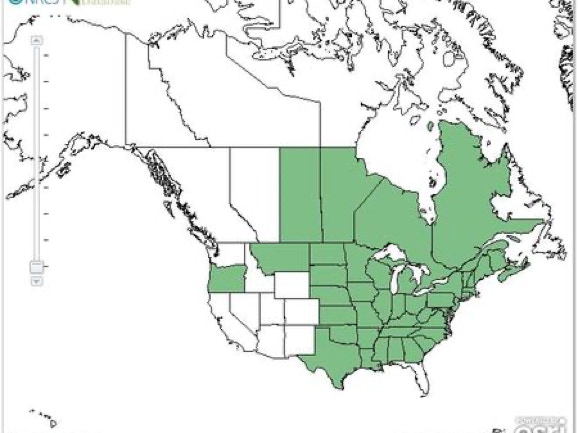
Plant Care
What’s convenient about the milkweed plant is that it requires minimal care. Once the roots are developed, milkweed will come back year after year. Flowers and pods develop normally after the first year. It is easy to control simply by mowing around the boarder of your plot.
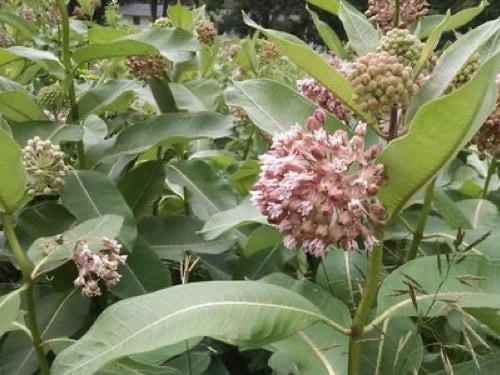
Butterfly/Caterpillar Food and Seeds
Once your plot is established, flowers will blossom in early summer and will attract the Monarch Butterfly and other pollinator insects such as the honey bee. Soon you will discover tiny yellow and black caterpillars that will quickly grow by eating the Milkweed leaves. In a couple of weeks, the Monarch chrysalis will form. About ten days later, the Monarch Butterfly will emerge, find a mate and eggs will be laid on the Milkweed to start a new generation. Later in the summer, pods will form on the Milkweed plant and the leaves will no longer regenerate.
Once your plot is established, flowers will blossom in early summer and will attract the Monarch Butterfly and other pollinator insects such as the honey bee. Soon you will discover tiny yellow and black caterpillars that will quickly grow by eating the Milkweed leaves. In a couple of weeks, the Monarch chrysalis will form. About ten days later, the Monarch Butterfly will emerge, find a mate and eggs will be laid on the Milkweed to start a new generation. Later in the summer, pods will form on the Milkweed plant and the leaves will no longer regenerate.
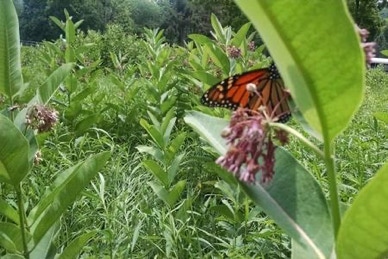
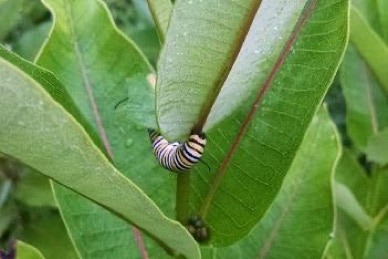
Monarch Butterfly on Milkweed Plant
Monarch Caterpillar Feeding on Milkweed Plant
Around the first frost, the milkweed pods will begin to split and release the seeds that float in the air on strands of floss. We recommend that the pods be collected before seeds are released, so unwanted milkweed plant propagation will not occur. Most farmers to not want the milkweed plant growing in their fields. Please be considerate of your neighbors! The seeds can be separated from the pods by shaking the seeds and floss in a bag. The seeds then can be planted or donated to organizations such as Monarch Watch. This organization accepts donated seeds and uses them in their milkweed restoration project. The milkweed floss has excellent insulation properties and can be used to stuff pillows. The empty pods are popular with craft enthusiasts for making wreaths and other items.
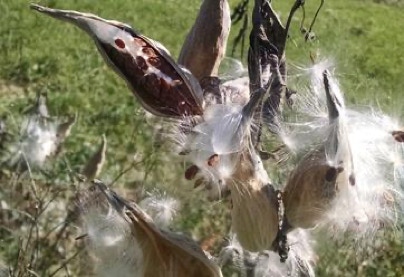
Milkweed Pods Bursting.
(If downwind seeding is not desired, pods should be gathered before bursting.)
Monarch Migration
In the fall, the final generation of the Monarch Butterfly migrates each year to Mexico from the northern parts of the U.S. and Canada.
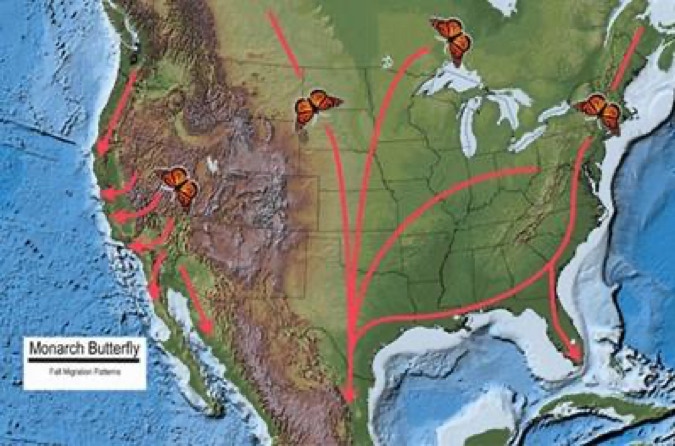
Monarch Butterfly Fall Migration
During the migration monarch butterfly depends on pollinator plants, like Milkweed, for food. Three to four generations are required to complete the northern return trip in the spring. The butterflies breed and lay eggs only on milkweed plants on the way back north.
The eggs hatch into caterpillars and one month later, they turn into butterflies and continue their migration north.
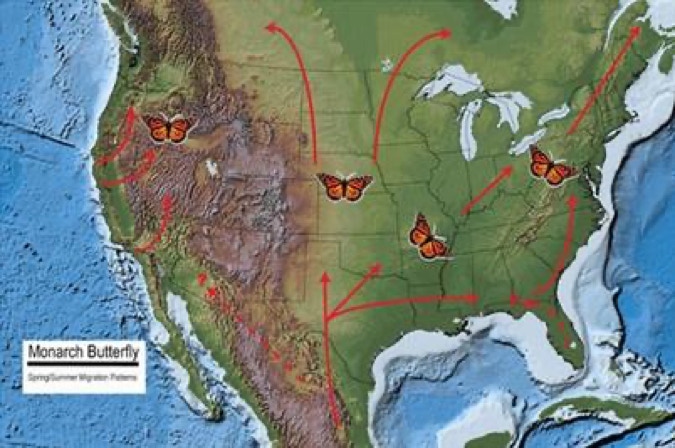
Decline of Milkweed through Pesticides
The increased use of “Round Up” ready crops has decimated the milkweed plant along with the Monarch butterfly – 90% reduction over the last 20 years. Farmers spray their fields with weed killer which kills all plants, then grow genetically engineered crops that are resistant to the weed killer.
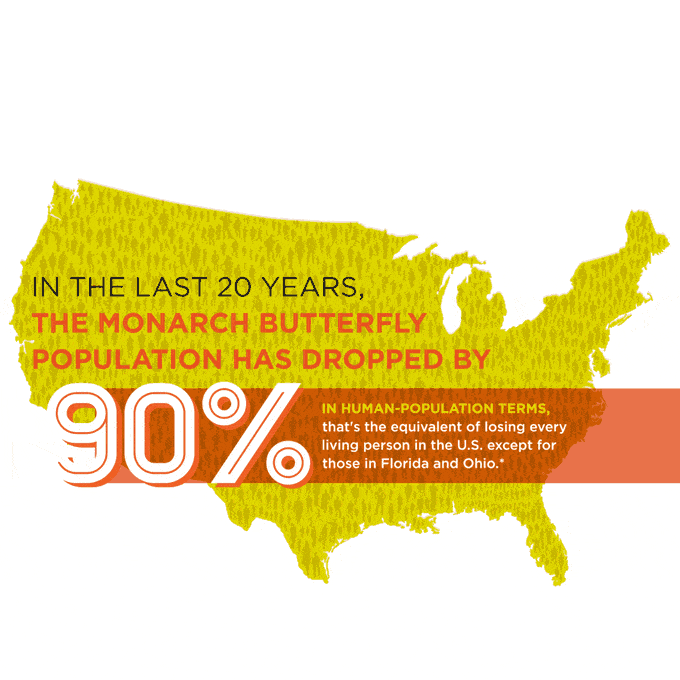
90% Drop In Monarch Butterfly Population
Crop yield is increased, but at the expense of the health of the environment. By planting Milkweed plots, we can help restore milkweed and the Monarch caterpillar to a sustainable level.
Clay Seed Ball Planting
Fall or Winter Planting - clay seed balls can be simply placed on the soil surface. The clay will protect the seeds and the snow along with freeze/thaw cycles will naturally prepare the seeds for germination in late spring or early summer.
Spring or Summer Planting - for improved germination, clay seed balls should be placed in a wet paper towel in the refrigerator for at least a week. This is called cold stratification and naturally occurs in winter. Then the clay seed balls should planted just under the soil surface. This will provide additional protection from mice and birds while the seeds germinate
Copyright ©